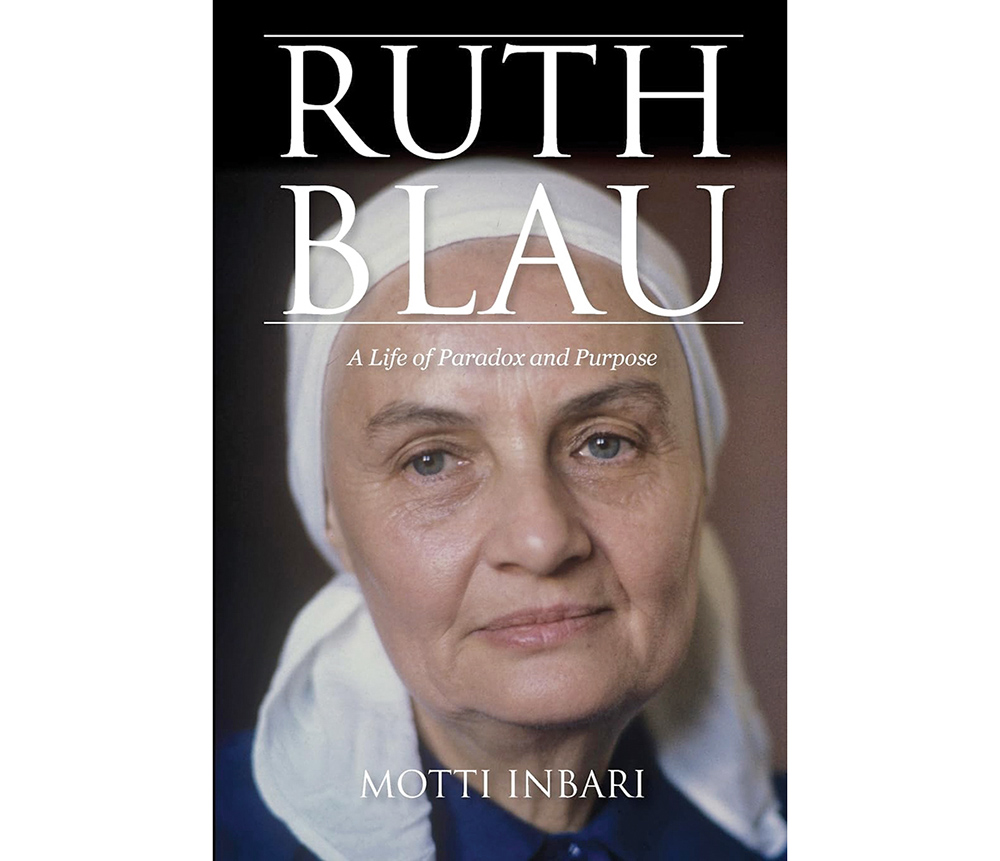Reviewing: “Ruth Blau: A Life of Paradox and Purpose (Perspectives on Israel Studies)” by Motti Inbari. Indiana University Press. 2023. English. Paperback. 278 pages. ISBN-13: 978-0253065964.

One of the characteristics of the very brilliant Dr. Gregory House, the titular character of the medical drama television series ”House, M.D.,” was that he would only take on very interesting cases.
Run-of-the-mill diseases such as appendicitis, heart attacks and anything related to a medical clinic were useless to him. As the best diagnostic physician in the country, he could only take on interesting cases. House said cancer is boring and instead focused on rare illnesses such as Erdheim-Chester disease, MERRF syndrome and more.
In the world of Orthodox Jewry in general, and the Haredi world specifically, there’s no shortage of brilliant people. Spend a few minutes in Jerusalem or Bnei Brak, and you will encounter them. But the number of interesting people, really interesting ones, is debatably small. When numbering the heads of yeshivas, no one is more interesting than the late Rabbi Yitzchak Hutner, former head of Brooklyn’s Yeshiva Chaim Berlin. And it’s not ironic that no biography has been written about him—and, likely, none will ever be.
While the Haredi world has produced interesting people, perhaps one of the most interesting and simultaneously enigmatic and controversial is Ruth Blau. Her personality and life story demands a biography. And Motti Inbari, professor of Jewish Studies at the University of North Carolina, has filled that void with “Ruth Blau: A Life of Paradox and Purpose.”
Born in 1920 into a French Catholic family as Madeleine Lucette, Blau died in 2000 as the widow of the head of the Neturei Karta. How Madeleine ended up as Ruth is a fascinating story that Inbari tells exceedingly well.
Part of it has to do with the fact that in the aftermath of the Shoah and the destruction of European Jewry, a new phenomenon emerged in Europe. As the dimensions of the Nazi destruction became apparent, a wave of European Christians seeking to convert to Judaism reached out to the Jewish communities.
About a quarter of the book details the infamous incident which she is most known for, the kidnapping of Yossele Schumacher. The Schumacher affair had the potential to wreak national havoc, which is why Prime Minister David Ben-Gurion had Mossad Director Isser Harel make finding Schumaker a priority.
In 1960, the 8-year-old Yossele was spending time with his religious grandparents in Jerusalem. Due to a combination of cultural differences, misinformation, generation gaps and more, his grandparents thought that Yossele’s parents wanted to send him to a non-religious school.
A plot was hatched to move Yossele out of the country where he could be in a religious environment, and that is where Blau got involved. While she has long been demonized as a child kidnapper, she didn’t operate in a vacuum and was directed by prominent religious figures in the Haredi world.
The case dragged on for two years, ultimately involving the FBI. And Schumaker was eventually found in New York City. Blau gave up information about Schumaker’s location and received immunity from prosecution and jail time.
It was not long afterward that Blau, a single mother looking to marry and start a Jewish family, was suggested as a shidduch to the most unlikely of partners, Rabbi Amram Blau, head of the Neturei Karta who was a widower with 10 children and 25 years older than her.
This suggested union was considered so scandalous that the Edah HaChareidis issued a ban against it. In some ways, the rule by the Edah HaChareidis against their wedding was similar to the Slifkin episode decades later. In both cases, false information was fed to decision-makers, and none of the parties were called to testify. Both cases were highly politicized, with the adversaries looking to settle old scores.
And as a convert, one would think Blau would be treated with kindness, sensitivity and open arms, but her experience was far from it.
Amram Blau died in 1974, but Blau did not take on the role of a dowager widow. She played the role of diplomat and met people such as Ayatollah Khomeini in the hope of saving Jewish lives in Iran. She even got involved in trying to secure the remains of IDF soldiers Zvi Feldman, Yehuda Katz and Zachary Baumel. While most of her work in those diplomatic areas was unsuccessful, she did not rest on her laurels and did her best to save Jewish lives.
As to the Schumaker kidnapping, which Blau is forever identified with and pilloried for—its source was based on miscalculations. Schumaker’s parents didn’t want to put him in a non-religious school but rather a non-Haredi one. Had he not been kidnapped due to religious fervor and an irrational fear, a national scandal could have been avoided, and a child’s life so traumatized that he needed years of therapy to recover.
Inbari writes that his book rehabilitates her image,which some may resent, especially Schumaker and his family. He leaves the reader to judge.
Blau was as fascinating as she was controversial and complex. Her Achilles’ heel will forever be the Schumaker kidnapping. Although she was far from being the only one involved, her co-conspirator’s names have been long forgotten.
Inbari asks in the introduction if Blau was Satan or a saint. While her moral compass during the Schumaker saga took her to dark places, she joined the most radical movement in modern Judaism because she sought the purest form of Judaism. To her astonishment, she discovered that even a society governed by flawless religious laws can be unjust, sectarian and divided.
Ben Rothke lives in New Jersey and works in the information security field. He reviews books on religion, technology, philosophy and science. Follow him on Twitter at @benrothke. His new book was just published: “The Definitive Guide to PCI DSS Version 4: Documentation, Compliance, and Management.”












